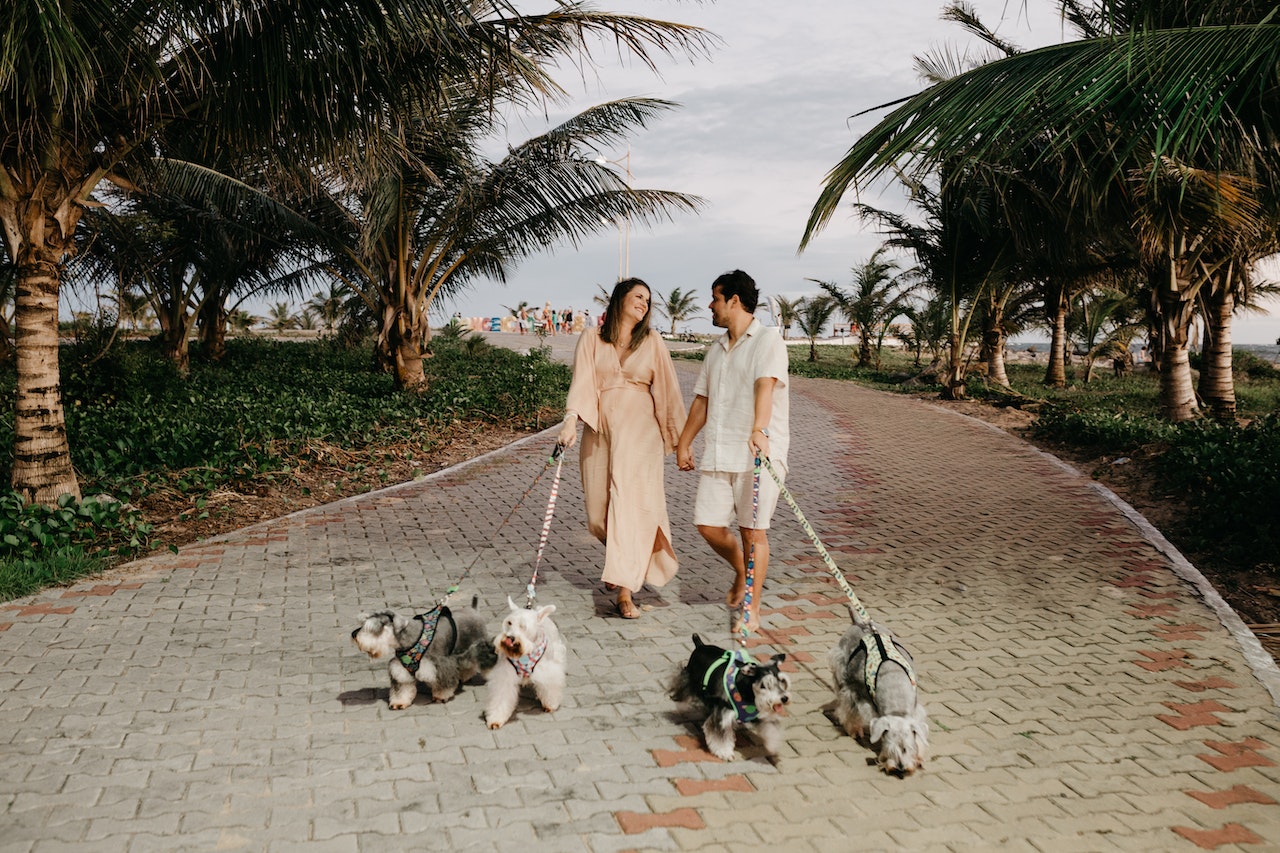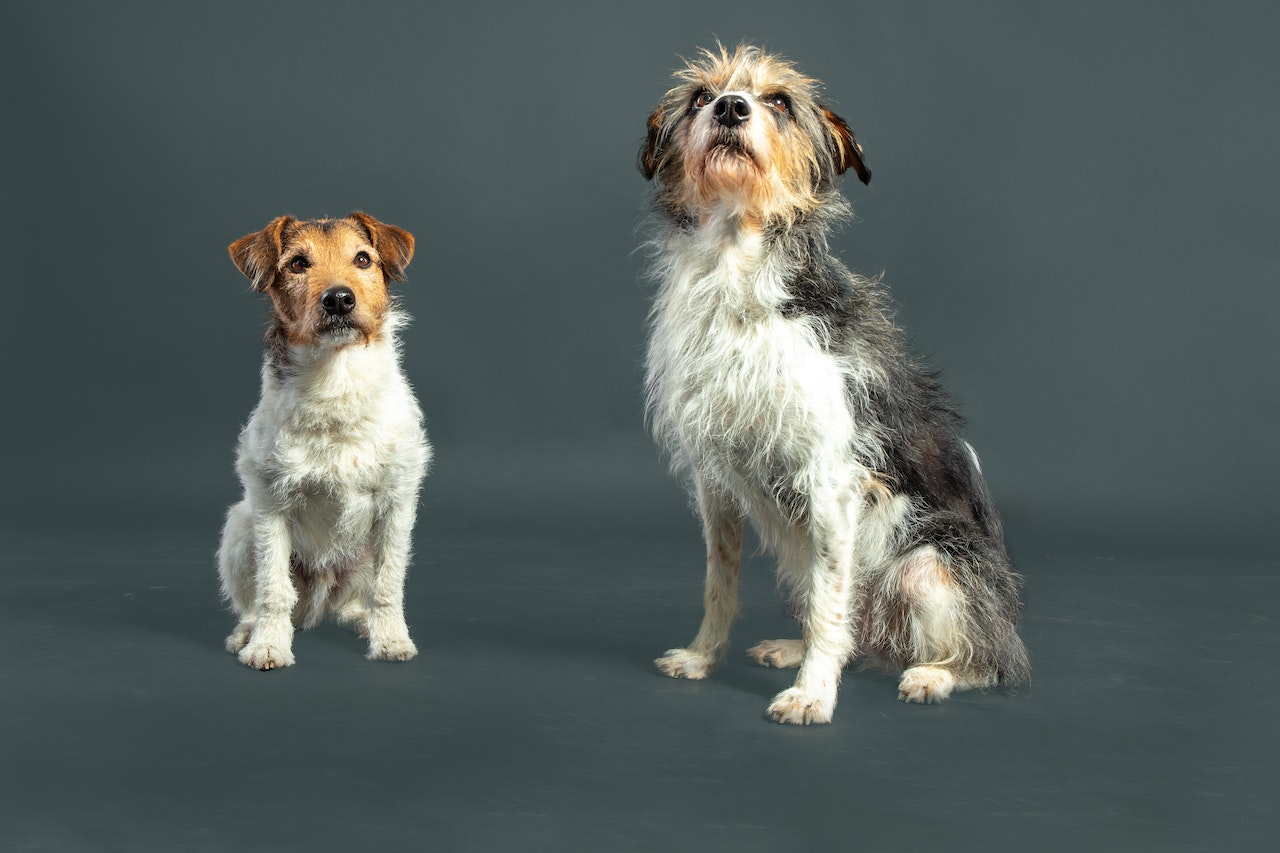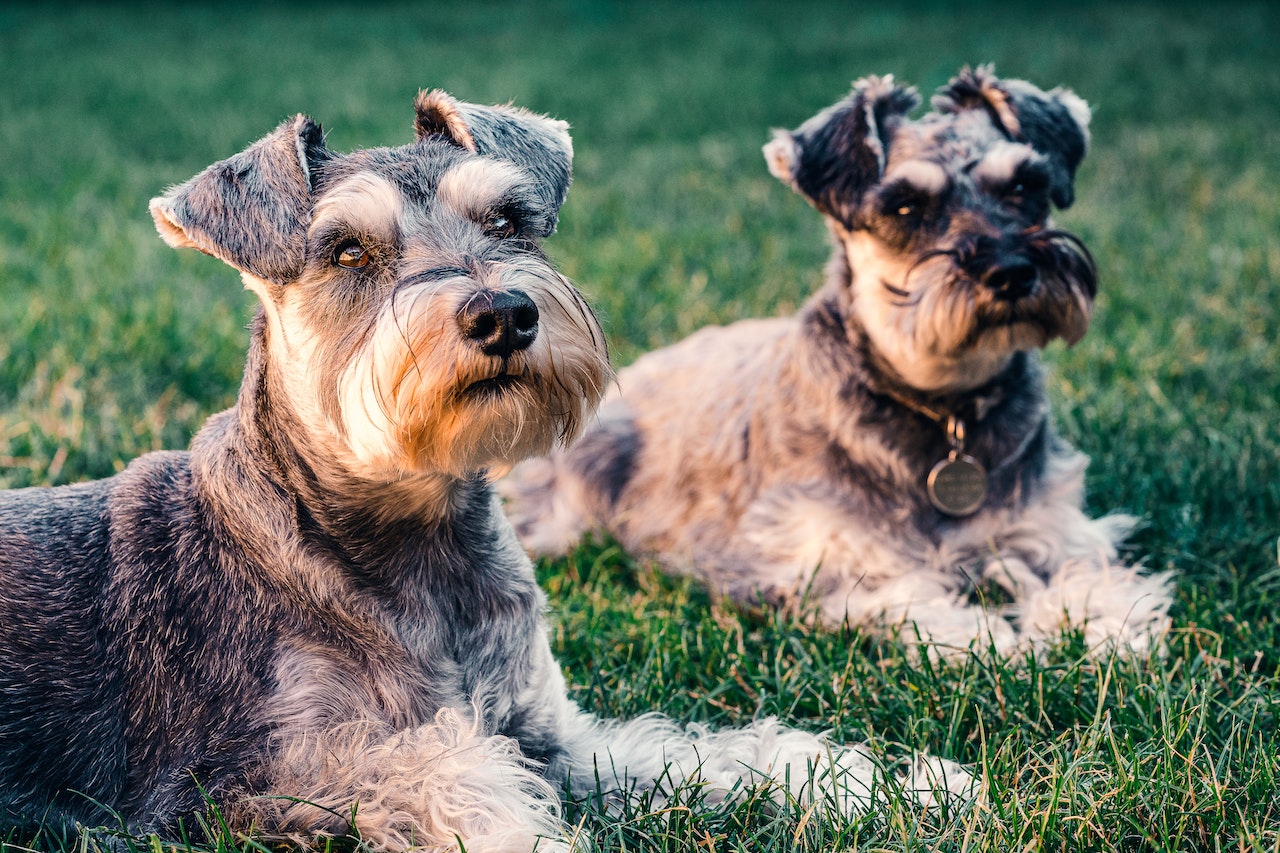Are you considering knowing Giant Schnauzer vs Standard Schnauzer? What could be cuter than a dog as a man’s closest friend? Of course, we should be particular about which breed suits our house and lifestyle before purchasing one. We can never go wrong with working dogs since they have a high degree of flexibility, trainability, and emotional quotient.
A Schnauzer is an excellent choice. However, deciding between a Standard Schnauzer and a Giant Schnauzer might be difficult. Although the similarities are striking, some breeds also vary. So, what are the differences between Standard and Giant Schnauzers? We’ll look at the distinctions between each fuzzy entity in more detail below.
Giant Schnauzer vs Standard Schnauzer: History

➤Giant Schnauzer History
Beginning in the mid-10th century in Germany’s Bavarian Alps, the Giant Schnauzer was developed to be protective. All Schnauzers originated in the adjacent kingdoms of Württemberg & Bavaria. These are agricultural areas where sheep, cattle, and other animals have been raised for many years. Although these dogs were designed to transport livestock from farm to market, German farmers often employed them to protect the farms on which they resided.
Several prior breeds contributed to the development of this protective characteristic. “It has been proposed that Bouviers are related to the Giants; however, there is no agreement on this.” Savs Fox is a resident of Boston, Kentucky. “The Standard Schnauzer, German Mastiffs, Great Dane, and various smooth-coated drover dogs, such as the Rottweiler, are the most generally approved components.”
➤Standard Schnauzer History
This is an ancient German breed seen in paintings by Durer and Rembrandt. In Mecklenburg, a 14th-century statue of a hunter with a schnauzer crouching at his feet sits in the market center. All schnauzers originated in the adjacent kingdoms of Bavaria & Wurtemburg. Standard schnauzers are thought to be a mix between the gray wolf spitz and, subsequently, the black German poodle and wire-haired pinscher stock.
The schnauzer was originally classified as a terrier in the United States due to the dog’s reputation as an exceptional matter. Still, in Germany, he was always classified as a working dog due to his career as a yard dog, ratter, and guard. Before World War I, it is estimated that over 90% of the dogs employed to defend farmer’s carts transported to market in Germany were of strong schnauzer lineage.
Standard schnauzers were originally seen in Germany in 1879 as wire-haired pinschers. In 1880, a breed standard was developed, and the breed quickly gained popularity as a show dog. They were only extensively recognized in the United States after World War I.
Key Differences Between Giant Schnauzer and Standard Schnauzer

Despite their eerie likeness, the key differences between a Standard Schnauzer and a Giant Schnauzer include size, adaptability, longevity, trainability, and health and grooming requirements. Though both are excellent dog breeds for fun, guarding, & training, the other breed excels in some areas. In addition to the fact that such fur babies are adorable, we will go over each of these working dogs’ peculiarities.
🐶Size
Standard Schnauzers are bigger than Giant Schnauzers. Schnauzers stand between 17 and 20 inches tall. Males weigh 35 to 50 pounds, while females weigh between 30 and 45 pounds. This dog breed’s facial hair gives the appearance of a beard. It also has a mustache and bushy brows. Its coats are firm and straight, with a grain of salt and pepper or pure black coloration.
The Giant Schnauzer, a relatively big dog breed with a thick undercoat and a hard outercoat, stands 23.5 – 27.5 inches tall. Females weigh between 55 and 74 pounds, while males weigh between 59 and 85 pounds. They reach the end of their development between the ages of 16 to 19 months. Given their stature, Giant Schnauzers exude a courageous, heroic, and dominating demeanor.
🐶Lifespan
Standard Schnauzers live longer than Giant Schnauzers. On average, a Standard Schnauzer may live for 13 to 16 years; however, a Giant Schnauzer can only survive for 10 to 12 years. The Giant Schnauzer originated in the Bavarian Alps in the mid-1800s. Before the construction of railways, their job was to herd livestock from farm to market, but as this became obsolete, they served in Europe’s police and military.
The Standard Schnauzer, on the other hand, has its roots in fifteenth-century Germany and was formerly known as wire-haired pinschers. They have a background of being dispatch carriers for the German army and Red Cross assistants, as well as therapy, search, and rescue dogs. However, they now often serve as a companion & personal guard.
🐶Temperament
It’s often difficult to make broad statements regarding the temperament of an entire breed. Each dog has a unique temperament, and various things influence its behavior. Giant Schnauzers and Standard Schnauzers are excellent choices if you’re seeking a companion dog. Their energetic and welcoming demeanor makes them an excellent option for families. Both are very loving toward family and will quickly become family members.
Regarding their behavior with youngsters, Standard Schnauzers easily outperform other breeds. Giant Schnauzers are good with children but must be properly trained and socialized. The Standard Schnauzer, on the other hand, has a reputation for being an excellent family & companion dog. If this is essential, we’ve compiled a list of the ten best dogs for children and families.
🐶Trainability
Standard Schnauzers are smarter and have a stronger prey drive than Giant Schnauzers. Both of these schnauzer breeds are intelligent, but the former is superior. Standard Schnauzers have a strong personality and are more inclined to bark than Giant Schnauzers. The Standard Schnauzer has several positive characteristics, including a high capacity to get along with other pets. They are more alert and eager to learn obedience teachings.
Although the Giant Schnauzer is simpler to teach than other dog breeds, it may turn violent when threatened. Because of their strong and domineering character should not be kept as pets in families with small children.
🐶Adaptability
Standard Schnauzers are more hospitable than Giant Schnauzers. While both schnauzer breeds are devoted to their family and owners and may have wanderlust, Standard Schnauzers are more suited for apartment life since they can withstand warm and cold weather, while Giant Schnauzers prefer warmer settings. Because of their lively and friendly demeanor, standard Schnauzers are ideal for first-time owners.
Giant Schnauzers are normally quiet and have little separation anxiety. Giant Schnauzers might have a calm demeanor. They are loyal and trustworthy to their family and the individuals they often interact with, yet they might be skeptical of persons outside their home or family circle.
🐶Health and Grooming
Standard Schnauzers have better health than Giant Schnauzers. Because they have less energy and do not need as much mental and physical exertion, they may be more destructive. Nonetheless, since they do not shed much, they are ideal for households with an allergic family member. Simply check the ears for any signs of illness regularly and wash their teeth with dog toothpaste.
On the other hand, Standard Schnauzers demand regular grooming to the point that they might necessitate the usage of expert grooming services regularly. Patiently with them while brushing, stripping, washing, cutting, and shaping their coat is necessary. They chew more often yet snore and drool less frequently. They also have modest walking and playing requirements.
Breeds Common Health Problems

Standard and Giant Schnauzers, for example, are typically fairly healthy breeds, although small Schnauzers are more prone to specific health issues. With that in mind, we’ll go through some of the most prevalent Schnauzer health issues for both standard and miniature Schnauzers. With such useful Schnauzer statistics at your disposal, you’ll be able to take the required precautions to ensure that your pup has a healthy and long life. Continue reading to learn about these common Schnauzer health conditions!
🔍Kidney Stones
This word refers to the formation of kidney stones inside the urinary system and is technically known as Calcium Oxalate Urolithiasis. Unfortunately, Mini Schnauzers are the breed most prone to kidney or bladder stones. They account for almost 40% of all reports, according to one 1998 analysis of over 16,000 urolith submissions.
According to one research, tiny Schnauzers had 11.8 times higher calcium oxalate urolith frequencies than other breeds, and males were three times more likely than females to have oxalate uroliths, with the average age being six years. It has been proposed that the tiny Schnauzer has a hereditary aberration of urinary tract localhost defenses that makes it more susceptible to bacteria urinary tract infections.
🔍Central Hypothyroidism
Schnauzers suffer from Hypothyroidism, which is not to be mistaken for their beneficial hypoallergenic qualities. Hypothyroidism is a hormonal condition that most typically affects middle-aged and older canines. In such circumstances, their thyroid gland produces shrinks or becomes irritated, leading thyroid hormone production to decline.
While practically every breed of dog may have normal Hypothyroidism, a far uncommon strain known as central Hypothyroidism is peculiar to Mini Schnauzers, especially those with dwarfism. It behaves similarly to the conventional variety, making it difficult to distinguish one from the other.
🔍Pancreatitis
When a dog’s pancreas works properly, it produces enzymes that assist in digestion. These enzymes do not begin to function until they hit the small intestine. In dogs with pancreatitis, however, the enzyme activates as soon as they are released. The pancreas, surrounding tissue, and neighboring organs are inflamed and damaged as a result of this early release.
If your veterinarian identifies your dog with the condition, they will most likely recommend rest, antiemetic medicine, and a low-fat diet consisting of more frequent yet smaller meals.
🔍Hip Dysplasia
Hip dysplasia is a widespread condition that affects a substantial percentage of the dog population. Because it is an inherited polygenic feature, breeders have been moderately successful in lowering its prevalence. Naturally, both of these conditions have an effect on your dog’s ability to run, play, and even sleep. So, if your Schnauzer develops any of the following symptoms, it’s critical that you take them to the vet.
Frequently Asked Questions
Which is the best Schnauzer?
While both schnauzer breeds make excellent watchdogs, Standard Schnauzers have more activity and a strong-willed, high-spirited personalities. However, if you want a smaller four-legged friend, the Miniature Schnauzer is a superior choice.
What two breeds combine to become a Giant Schnauzer?
The Giant Schnauzer is a hybrid between the “bear Schnauzer” and the black Great Dane, which explains their shorter hair and bigger physique, resulting in an exceptional working dog that can also act as a household security dog.
What makes Schnauzers so unique?
Why are Schnauzers the finest dogs? Schnauzers are seldom furious because of their affectionate, laid-back personalities. Originally developed in Germany to hunt rodents, you may be certain that they will expel any pests from your house. They are also good security dogs.
Are Schnauzers lazy dogs?
Miniature Schnauzers are vivacious small dogs with large, loud personalities. These dogs may be both lazy & active, whether they’re cuddling up on the sofa or going on a stroll, as long as they get to spend time with their families.
Are Standard Schnauzers a decent breed?
This breed is well-known for being a wonderful companion that is entirely dedicated to its family members. They are not generally “one-person dogs” but rather value all members of their “pack.” The Standard Schnauzer is an excellent family dog since it is both lively and tolerant.
Are schnauzers, in general aggressive?
Because the standard schnauzer is a strong-willed breed, if it is not properly socialized or taught, it may become violent against other dogs and strangers. It is also renowned for nipping & biting, which may be addressed with training. Though not impossible, a deadly incidence caused by this standard breed is uncommon.
Final Thoughts
Have you chosen to acquire one of these gorgeous dogs now that you understand the distinctions between these two breeds? We attempted to give you an idea of what to anticipate from Giant Schnauzers & Standard Schnauzers in this post. Choosing a new partner entails deciding on new obligations. Give your time and efforts to these breeds so that they may repay your faith. Do you want to know what do you call a jack russell chihuahua mix? Click Here!

